Power Consumption and Noise
Power consumption on this NAS was intriguing. The power supply is a 550W unit, but realistically we never expect to use anything near that rating, even as hard drives spin up in unison.
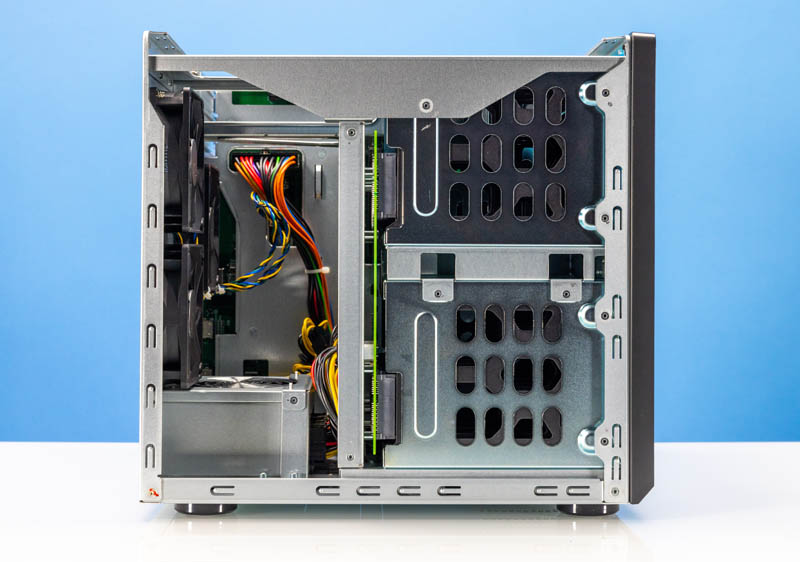
Instead, we saw typical idle/ resting power of just over 100W with all sixteen drive bays filled and with two M.2 SSDs. A huge portion of that though was all of the drives in the NAS. It feels like a lot, but we had a total of 18 storage devices connected so it did not feel that high given those were likely using half of the power we were seeing, possibly a lot more.
The noise on this one is very strange. QNAP did a great job of making the fans on this system relatively quiet. If you have all SSDs running in this NAS, then you are unlikely to really notice it. Instead, the 12x HDDs made significant noise. Having this in the same office made us think that something was happening outside, but it turns out those were just the whirs and clanks of mechanical hard drives spinning up and doing their tasks, even when the NAS otherwise seemed idle.
Key Thoughts
First, it is hard not to take a moment and think about the fact that in the $1800 range, this is really good. A TrueNAS MiniXL+ has far fewer drive bays and a 3+ year older CPU for $1649. By the time we add 2x 10GbE to the QNAP and 32GB of ECC memory the cost per drive is so far below the TrueNAS Mini XL Plus at this point that this is a far better value if you are looking for a ZFS NAS. QNAP tends to have software that is geared more towards storage novices which is a bigger market than TrueNAS’s focus on storage administrators as well.
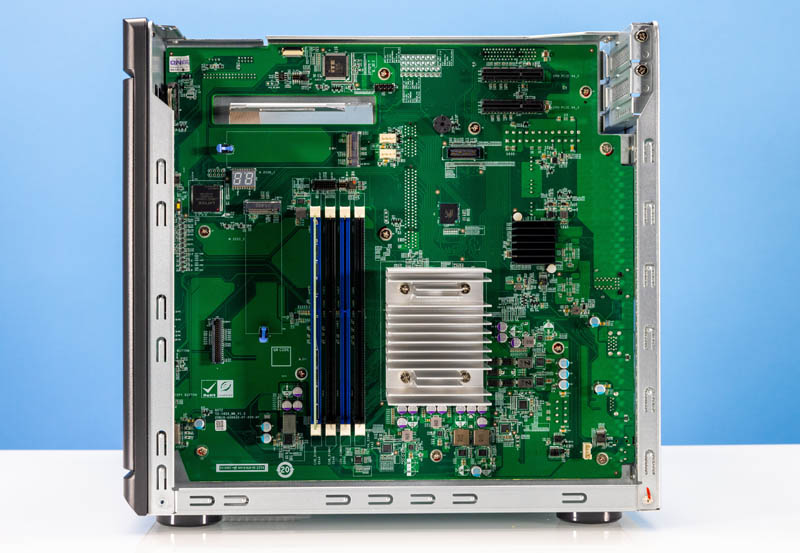
The idea of expanding via cards makes sense, but we wish that QNAP put a quiet fan over the PCIe slots to provide better cooling. That is a reason QNAP’s cards come with their own fans, but at some point, it is more efficient to just have single fans blowing through cards.
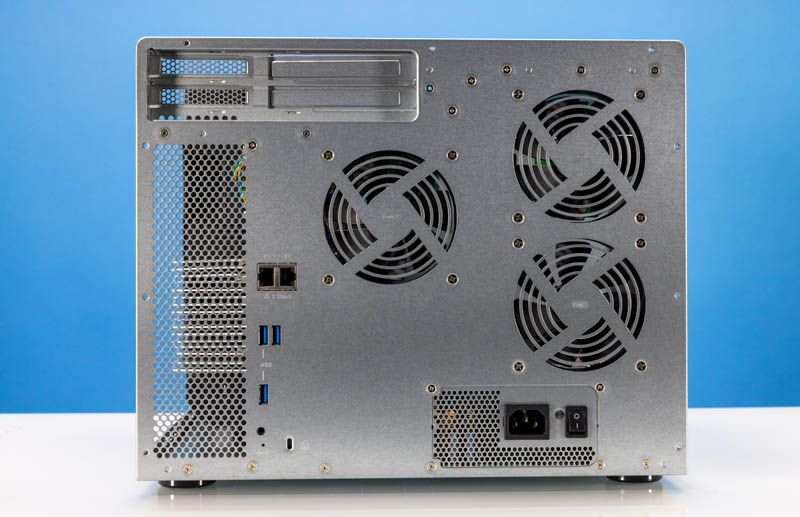
Still, the one part of this system that is hard to shake is just how close it is to being great. Small things like not using ECC memory, and having only 8GB instead of 16GB as standard feel like they would be big impact and low-cost upgrades. On the networking side, we have The Ultimate Cheap Fanless 2.5GbE Switch Mega Round-Up, so 2.5GbE is great, but it feels like using another SoC for 10GbE or 25GbE would have taken this to another class.
Perhaps that is the challenge though. Trying to stay in a similar price band while adding features is tough. Adding 25GbE would, in turn, make us want a bigger CPU. The TS-1655 is one point where that cycle stopped, but there are plenty of other models out there.
Final Words
After testing the QNAP TS-1655 a few things are clear. This massive desktop (or if we are being honest, equipment closet or floor) NAS is really cool. We get the first 10nm storage-focused Atom C5125 CPU NAS that we have seen when this NAS unit’s competition is often running 3-5 year older CPUs. That is a huge jump there.
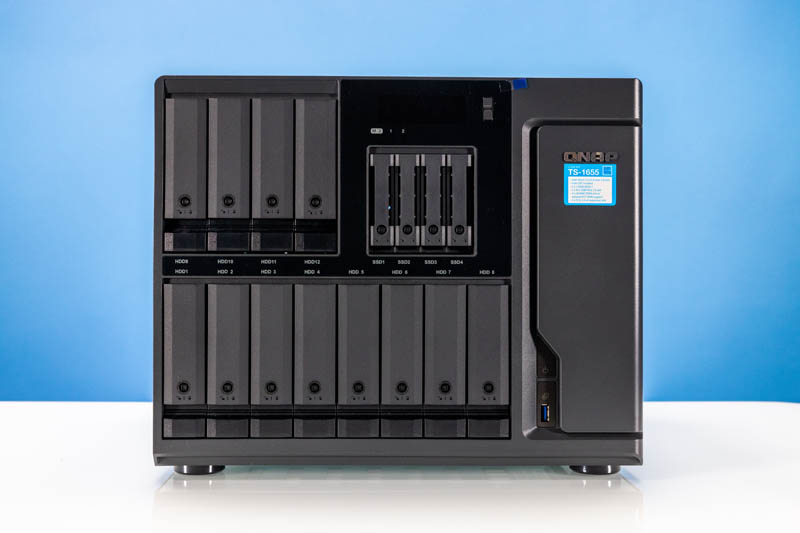
For a lot of companies, a NAS solution that can easily store well over 200TB, with room for cache drives, and even a SATA SSD array for VMs is going to be more than enough for the near future.
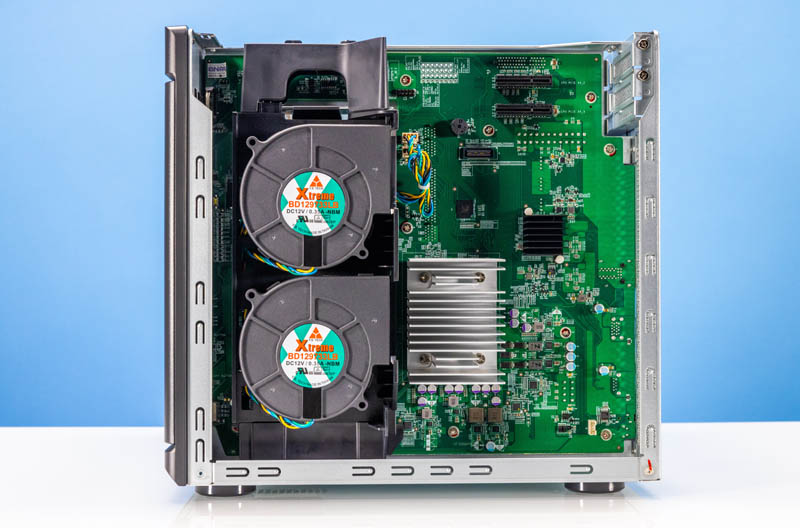
While we would swap the RAM, and likely add 10GbE/25GbE networking, it is hard not to appreciate what this is. This might be the best ZFS NAS out there for those that need to store a lot more than lower-end 4-bay to 8-bay units can handle and also want the ease of use of QuTS hero’s wizards to help them get online quickly.
Where to Buy
We found this one on Amazon (Affiliate link) but there are a number of other authorized resellers out there.




Can you use disks from an existing ZFS array and import them? I’ve got an 8-bay server running now, but this would make a handy upgrade.
I couldn’t agree more that they should’ve used ECC. 8GB on a $1900 NAS? You’re kidding? There’s 32GB in $700 systems.
Pretty sure the network speed graphic on page 3 should have a label changed to dual 1 Gbe.
Kevin – totally correct.
We need low power all 2,5″ SSD NAS systems to be tested. And preferably the better value ones (no the 6k+ ones out there)